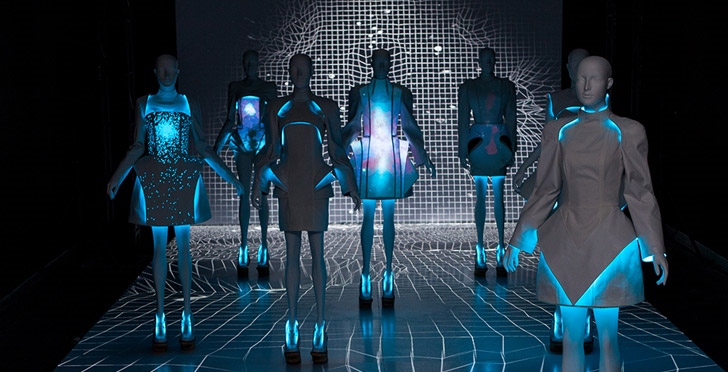The implementation technology has already disrupted and changed many different industries. Nowadays, the need for new technologies is increasing rapidly and thus every industry is trying to bring the most innovative products or services to the market. The fashion industry, which is considered to be a fast-changing one that always has to keep up with the newest trends, has been influenced by the introduction of new technologies as well. However, those technologies mostly affected parts of the supply chain such as production or logistics, but not the core product – that are fashion wearables.
Today, fashion technology has grown at a very fast pace. The shift to e-commerce was only accelerated by the pandemic and left companies, which always focused on their stores as main selling points, vulnerable (e.g. H&M, Zara). Beyond that, robots are already set in place to cut fabrics and sew new wearables, whereas algorithms that are based on artificial intelligence are constantly observing customer behavior in the web to predict upcoming fashion trends. Nevertheless, the actual wearables have been left quite untouched so far. What opportunities could one have to implement technology in fashion pieces and what prevents companies from doing so?
Imagine living in Sweden, being exposed to cold winters. Or in The Netherlands, where the weather constantly changes and is hard to predict. Wouldn’t it be nice to be able to wear something that is keeping you warm no matter how strong and quickly the winter season changes? Alpha Tauri, a brand extension of Red Bull, did exactly that and launched – together with the Deutsche Telekom – a heatable jacket. The jacket is controlled via an app on a phone. In that app the customer can set the desired temperature level of the jacket and use the battery as a portable charger for the smartphone when it is not charging the jacket.

App to set the temperature level of the Heatable Jacket (https://www.dayy.de/project/alphatauri-telekom-heatable-capsule-collection)
Why are such innovations seen so rarely in the market? First, all technologies need to be addressed to the market. Therefore, the simplest explanation is that the customers are actually not consider those innovations valuable. Concerning the price, the high costs of such implementations would increase the prices for the end consumer as well. A price that consumers might not be willing to pay. Beyond that, a reason could lay in the nature of the fashion industry itself. Since it is an industry that is an emotional one and driven by appealing designs, customers may think that technology is making wearables less fashionable and thus not worth to buy. Do you think we will see more technology implement IN the fashion? Or will the technology continue to be applied to fields around the product? What could be other reasons that prevent companies of walking that path?


Hi, thanks for your interesting piece. Although technological innovations in garments can add great value in potential, it will continue to remain a niche market for a while. The concept of fast-fashion seduces consumers to constantly buy new clothes. Incorporating technology would increase garment prices and would hinder consumers to keep up with the latest fashion trends. The success of such technology greatly depends on the features. For instance, can the electronics inside the garments be swapped to other garments. This would enable people to keep up with the latest trends. Also when the quality of the garment deteriorates, there is no need to dispose the garments including the electronics.
Apart from this adjustable heating technology, I would be curious to what other technology would be useful for consumers? Personally, I do not have any problems with the current features of clothing, apart from its environmental impact and the working conditions in the production process. I would see much more potential in the technology around the garments itself. For instance, technology that would allow you to upload your exact body dimensions, so you can fit the garments online? This would greatly reduce the number of parcels returned due to imperfect fitting.
Hey!
This piece reminded me of an exciting company based in Amsterdam called Lalaland. Essentially, they have developed an algorithm that enables customers to try out different outfits online instead of going to a physical space. I genuinely believe there is a lot of innovation coming out of the retail market, and companies such as Zara should invest heavily in new digital tools. I am curious to know whether you come across more of these smaller companies that are trying to disrupt the incumbents, in this case, the H&M’s and Zara’s of the world. Overall a great piece, and thank you for highlighting such an exciting topic.